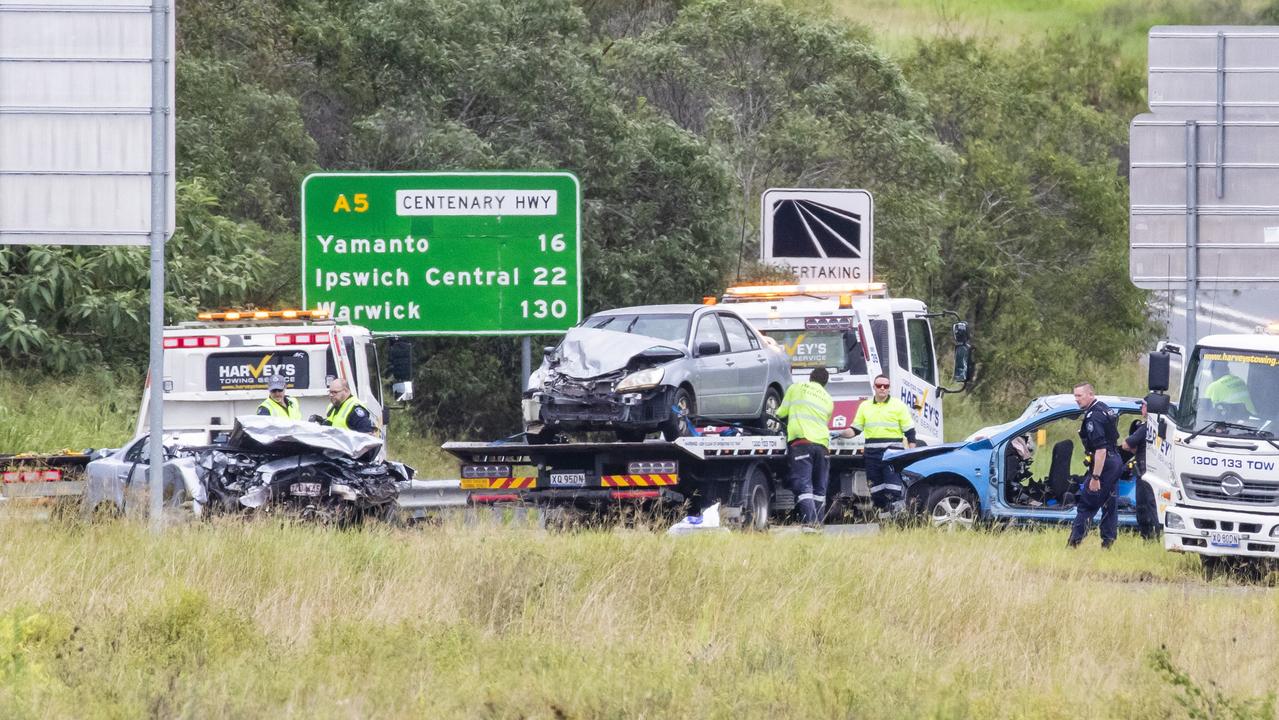MH370 mystery: Where to now?
THE searches have been fruitless. The reports have provided little new information. Aviation’s greatest mystery will not be solved any time soon, but one ongoing research effort offers the faintest hope.
Travel Incidents
Don't miss out on the headlines from Travel Incidents. Followed categories will be added to My News.
FOUR years after Malaysia Airlines Flight MH370 mysteriously vanished, the search for the aircraft, its passengers and crew is over.
At least, for now.
It’s been suspended before.
But it’s also been revived before.
The Boeing 777-200 disappeared from military and civilian radars in March 2014 with 239 people — mostly from China — on board.
It was supposed to have been headed to Beijing, from Kuala Lumpur.
It never arrived.
And yesterday, the independent investigator appointed by the Malaysian Government, Kok Soo Chon, concluded: “The team is unable to determine the real cause for the disappearance of MH370 … The answer can only be conclusive if the wreckage is found”.

Clues to the airliner’s fate are sparse.
Reviews of radar tracks revealed it had inexplicably changed course, crossed over Thailand and disappeared into the Andaman Sea headed roughly towards India. After this, there were only a few tantalising signals recorded by satellite to work with.
And these showed the aircraft travelling roughly south, through the vast open expanse of the Indian Ocean.
In January last year, Australia, Malaysia and China agreed to end the $198 million search after no sign of the jet was found on the seabed of a 120,000 square kilometre search zone. It was the largest missing aircraft search in aviation history.
But Texas-based company Ocean Infinity took up the search again earlier this year on the gamble Malaysia would pay it up to $70 million if it could find MH370s wreckage. Despite the confidence it had in its advanced sea-scanning technology, it also found nothing.
But the fundamental questions remain.
Could the wreck be somewhere outside the search zone? Could there be more clues among the wreckage scattered about the Indian Ocean? What now for the hunt for the missing aircraft, crew and passengers?
Is all hope of finding MH370 lost?
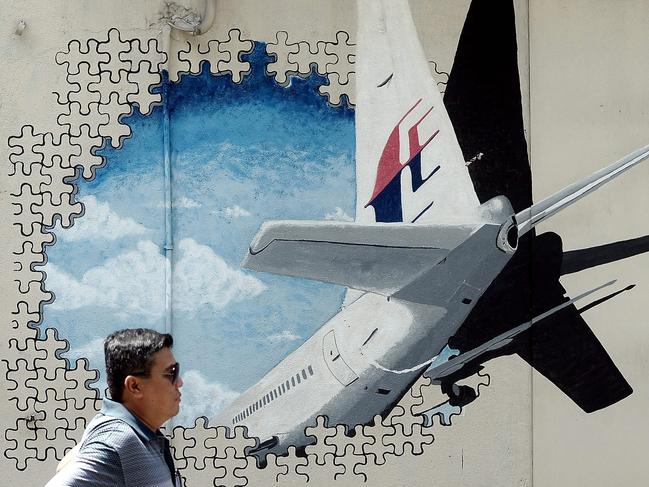
WHERE WE’RE AT
MH370’s disappearance has spawned a multitude of theories. Some say it was a hijacking. Others a terror plot.
Malaysia’s Prime Minister Mahathir, 92, has added fuel to the fire of one of the many conspiracy theories when he suggested the plane’s controls could have been ‘hacked’ and flown to its grave remotely.
But the author of yesterday’s report, Chief Investigator Kok Soo Chon, has dismissed that idea as impossible.
“We cannot establish if the aircraft was flown by anyone other than the pilot,” he admitted. “We can also not exclude the possibility that there’s unlawful interference by a third party.”
But this did not include remote hacking.
“There is no evidence to support the belief that control of the aircraft 9M-MRO (operating as MH370) could have been or was taken over remotely as the (necessary) technology was not implemented on commercial aircraft,” he said.
But Investigator Kok confirmed that a series of simulator recreations confirmed MH370 had to be under manual control — not autopilot — to make its fist major turn when deviating from its assigned flight path.
After that, everything remains a mystery.
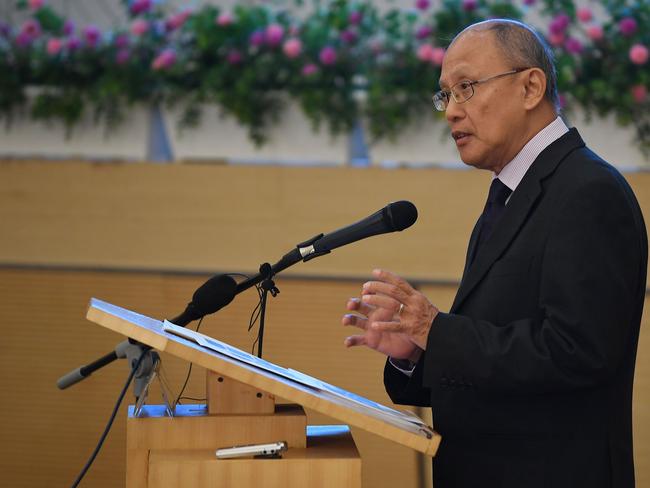
MH370 did not behave as though it was attempting to evade radar — despite the sequential shutdown of all its on-board tracking and communications systems. If a pilot was deliberately trying to confuse automated radar systems, they would have been regularly changing speed and height.
MH370 did none of those things.
Australian investigators have defended their findings that the plane was out of control when it plunged into the ocean.
Investigator Kok agreed. He said all evidence pointed to the Boeing 777’s control systems being in cruise position. If there had been attempts to glide or direct the aircraft in its final moments, guidance systems such as flaps and aerolons would have been extended.
The Australian Transport Safety Bureau has found MH370 mostly likely ran out of fuel before it crashed. It believes all 239 passengers and crew were already long dead by that point. It says a depressurised cabin and cockpit would have killed even those wearing oxygen masks.
Search director Peter Foley recently fronted an Australian Senate committee of inquiry.
He said the ‘handshake’ transmission made during the flight’s final moments showed the Boeing 777 was in a fast and accelerating descent. Debris from within the plane’s interior found washed up on the west coast of the Indian Ocean also point to a high-energy impact.
“If it was being controlled at the end, it wasn’t very successfully being controlled,” Foley said.
He added “it’s absolutely evident” that somebody had controlled the aircraft until it reached the Indian Ocean, which ruled out mechanical or electrical malfunction as being the cause of the disaster.

LONG SHOTS
The Australian Transport Safety Board found last year that the search for MH370 was extremely difficult because no locator transmissions were received from the aircraft after its first 38 minutes of flight. On-board systems designed to automatically broadcast the flight’s position had been disabled.
For this reason, initial efforts to locate the aircraft after it failed to arrive in Beijing from Kuala Lumpur on March 8, 2014, were focused on the South China Sea along the Boeing’s expected flight path.
But it was eventually established something odd had happened. A review of commercial and military radars revealed the aircraft ‘went dark’ (disabled its location transmitters), before changing height, speed and course towards the Indian Ocean.
It was soon realised that there was only one source offering any indication whatsoever as to MH370’s fate: an automatic satellite ‘handshake’ signal transmitted by the aircraft’s engines.
Specifically, seven such ‘handshakes’ were recorded by an Inmarsat satellite over the six hours following the airliner’s disappearance.
Each ‘handshake’ revealed the distance of the aircraft from the satellite at the time each signal was received. But not the exact location.
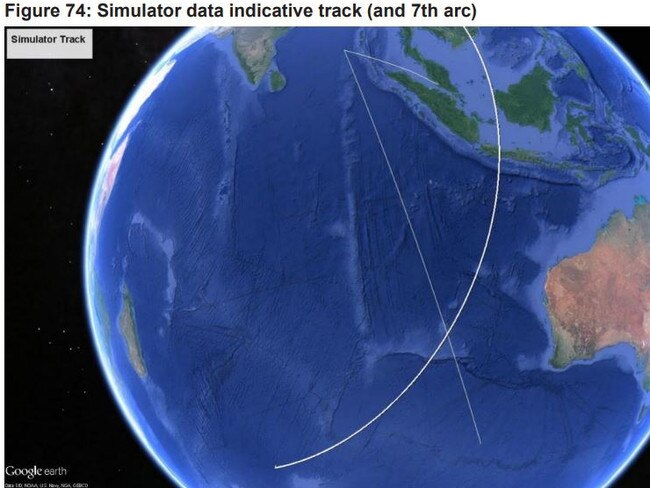
Each ‘handshake’ therefore projected a location arc — ranging from the Southern Ocean to Kazakhstan in the north.
Matching each arc with flight simulations of possible MH370 flight profiles enabled search teams to sketch out an envelope of possible courses it could have followed. All this, when applied to the arc of the seventh and final ‘handshake’, appeared to point to a crash zone spanning some 120,000 square kilometres (a 150km-wide band between latitudes 39.3°-36°S).
Much later, debris identified as either certainly or possibly being from MH370 began to wash up on the western coasts of the Indian Ocean. Reunion Island. Madagascar. Mozambique. South Africa. Tanzania. Mauritius.
Ocean drift modelling and experiments appeared to confirm the debris likely originated in roughly the area already defined as the search zone. But reviews found the flotsam had a strong chance of originating further north along the arc of the 7th ‘handshake’ (most likely between 36°S and 32°S).
That same drift modelling also successfully predicted coastal sites where further MH370 debris could be found.
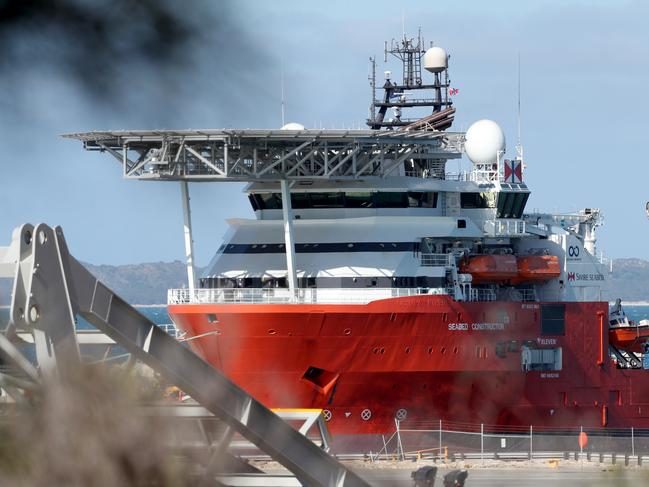
AGAINST THE ODDS
The search earlier this year was centred on a 25,000 square kilometre zone to the north of the original search area.
The Ocean Infinity project was a privately funded gamble to find MH370’s wreckage and recover its black boxes. It was confident enough in its equipment and search-zone calculations that it expected to collect up to $90 million in rewards from the Malaysian government.
It was given 90 days to do so.
The Norwegian research ship Seabed Constructor deployed an array of eight self-piloted drones. Each carried sonars and cameras that could operate up to 6000 meters beneath the waves.
But, after the ship finished scouring its primary search zone in April, Ocean Infinity asked for — and received — an extension to the deadline.
In all, the Seabed Constructor managed to survey some 86,000 square kilometres. But, like all those before it, it found nothing.
The second deadline passed on May 29.
Malaysia’s new Transport Minister, Anthony Loke Siew Fook, then ruled out any further extensions.
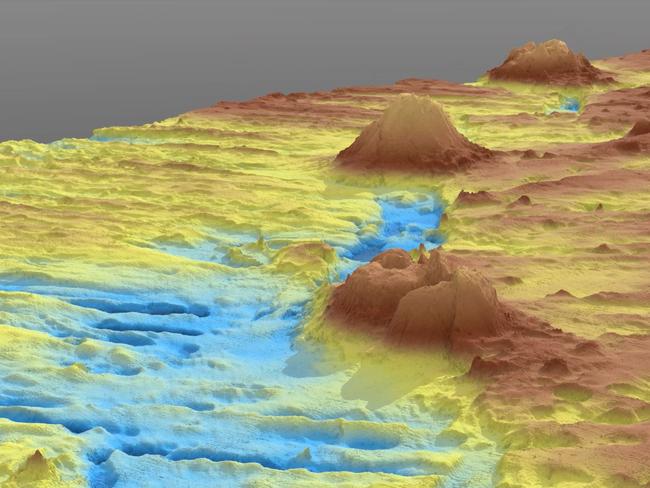
OCEAN OPPORTUNITY
With no official search effort planned by Australia, Malaysia or private enterprise, the continued search for MH370 hinges on an ongoing project to map all the world’s oceans before 2030.
It’s an ambitious project.
About 93 per cent of the world’s oceans beneath 200 meters remains uncharted.
But the SeaBed 2030 project hopes its surveys will reveal a multitude of wrecks — including that of MH370.
The project has received support from Dutch deep-sea energy prospector Fugro, which was involved in the initial search for the missing airliner. Ocean Infinity, which conducted the search for MH370 this year, is another contributing company.
Reuters reports the project, which has an estimated cost of $4 billion, will leave waters closer to shore to national research bodies.
Director Satinder Bindra said the project will tap research missions as well as explorers searching for sunken wrecks. But it will also assemble data pulled from ships, fishing boats and commercial companies.
“For too long now we have treated our own oceans as a forgotten frontier,” she said.
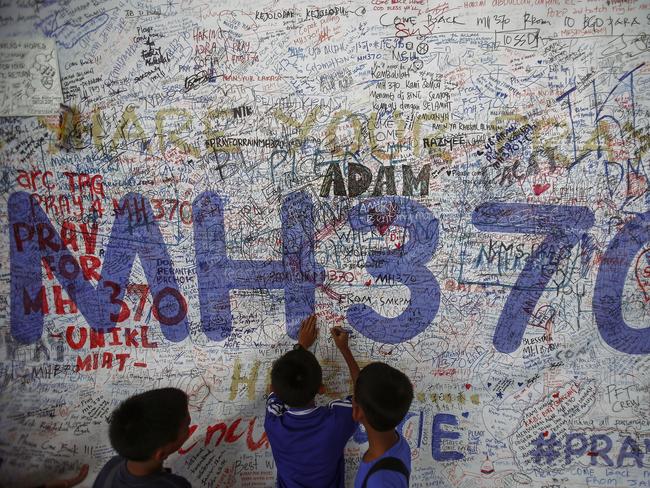
CRITICAL REVIEW
Voice370, an activist group representing families of those on the plane, is continuing its call for Malaysia’s newly-elected government to renew the underwater search.
It has sent a letter to the new Malaysian government urging it to undertake a “comprehensive review” of all aspects of the investigation.
It also called for “an investigation into any possible falsification and/or elimination of records related to MH370”.
Voice370 hopes the Malaysia’s new Pakatan Harapan (Alliance of Hope) government, which won an election earlier this year in a surprise upset, will have the integrity to conduct an honest review.
Not that any allegations have been raised against investigator Kok. But the previous Malaysian government is embroiled in widespread accusations and charges of corruption.
Malaysian Transport Minister Anthony Loke, who was sworn in as minister just weeks ago, said his government would release all details on the investigation into MH370’s disappearance now the Ocean Infinity search was over.
“I’m not privy to whatever details that may not have been revealed, but as minister, I am committed to releasing all details to the public,” Loke told Malaysian media.
“I’m very serious about this, but I cannot guarantee that the flight can be found. I’m just a minister, not an aviation expert. But, I can assure that the report will be published openly and transparently without anything being adjusted or hidden, including the elements of controversy”.

That report has now been made public. It contained nothing that casts new light on the mystery.
Prime minister-in-waiting Anwar Ibrahim told The Australian that the future of the MH370 search would not be determined until after his new government completed the review.
He’s previously promised a fresh look at all documentation, including that relating to radar data and the procedures followed by air traffic control. Malaysia Airlines will also be carefully scrutinised, he said, including its delays in releasing contradictory cargo manifest reports which described ¬2.2 tonnes of cargo initially as lithium batteries and later as “radio accessories and chargers”.
“This is local information in which we can do further digging,” he said. “Then perhaps we can reopen communications with the international bodies with our new information.
“The radar could speak volumes. Was it a failure of the system? Was it a failure of those monitoring the system or was it an intention to ignore or cover up? To me, that is still to be determined.
“I am not ruling out further searches in the future depending on what these domestic investigations bring up.”
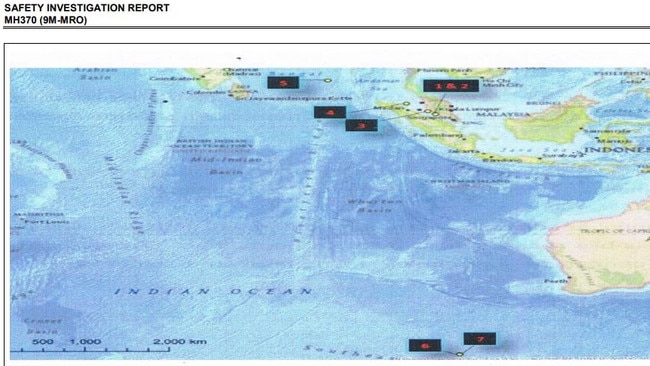
Mr Anwar, however, is sceptical of the widespread belief that the plane was hijacked by pilot Zaharie Shah. Zaharie was a member of Anwar’s political party. He is also distantly related by marriage.
But Chief Investigator Kok said the only possible evidence of who steered MH370 on its fatal course remains the flight simulator data found on the captain’s personal computer. It included waypoints similar to those MH370 is believed to have followed on its final flight.
No clue as to a motive, however, was found.
“We examined the pilot (Zaharia) … He has no conflict issues with friends or family and had shown no signs of social isolation, self-neglect, no abuse of alcohol or drugs, no change of habit or interest, no stress or anxiety was detected in his audio recordings and no signs of significant behavioural changes as observed in the CCTV footage,” investigator Kok said. “We examined his competency. He was a very competent pilot, almost flawless in the records, ability to handle work stress very well.”
But there was the one element of doubt: “In the forensic report of the Royal Malaysian Police was there was no unusual activities other than the flight simulations,” he said.


